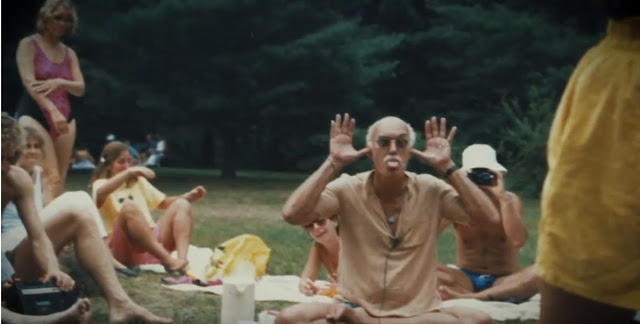That is only one of numerous life exercises and astute declarations conferred by Alpert in maker director Jamie Catto's charming documentary "Getting to be Nobody," which, however scarcely a complete take a gander at the previous Harvard psychologist and much-distributed creator (counting the 1971 hit "Be Here Now"), demonstrates a solid and moving token of Alpert's otherworldly knowledge.
The spine of Catto's minimal film is a progression of meetings, shot in 2015, with a long-lasting companion and educator Alpert in the rationalist's Maui home. Alpert, presently 88, is found in this recording utilizing a wheelchair because of a serious stroke he encountered in 1997. Be that as it may, Alpert's discourse, notwithstanding his stroke-related expressive aphasia, stays articulate, with his beauty, funniness and self-deploring realism completely unblemished.
Alpert's connecting with way and Catto's profound and standing, yet non-slavish, commitment to his "star" join to make their discussion both including and legitimate as Alpert covers a scope of themes including outrage, love, soul and self, the "covers" we wear for other people and accommodating demise as both an idea and a genuine state.
In one of the documentary's most captivating minutes, he amusingly rejoined with a previous Harvard associate 25 years after the last observed one another and long after Ram Dass had grasped his profound way and another personality. "You know, Dick, you haven't changed a piece," the man let him know, a lot to his vexation.
The documentary, isolated into parts whose onscreen headings incorporate such pointed truisms similar to "all simply strolling each other home" and "Treat everybody you meet like God in drag," is basically separated between portions from recordings of its subject's talks throughout the years and contemporary sections in which Catto affectionately meetings Ram Dass. The last mentioned, bound to a wheelchair and experiencing expressive aphasia because of a 1997 stroke (the film doesn't advise us regarding this), wavers in his discourse on occasion, with the filmmaker directing him through the procedure with delicacy and no modest quantity of spouting.
As anyone might expect, considering Ram Dass' propelled age (he's 88), one of the film's common subjects is demise. Another is the idea of subsuming one's personality and sense of self to be a piece of the more prominent universe, a thought that rouses the film's title.
The passages from the talks are pressed with Dass' open image of shrewdness and no modest quantity of silliness. Their impact is shockingly weakened by Catto's endeavors to mitigate the talking-head viewpoint with going with visuals, including authentic and stock film just as vintage kid's shows and film cuts. Albeit once in a while compelling, the pictures are regularly just digressively identified with the points being talked about and often simply senseless, for example, when we see two men frustratedly endeavoring to get an obstinate jackass to move.
Notwithstanding your religious or nonreligious tendencies, it's anything but difficult to value Dass' insight and silliness, also his sympathy for individual people showing the most noticeably awful of practices. Dass' conviction framework is an amalgam of various religions, philosophies, and perspectives, and its allure has extended past nonconformist Baby Boomers to incorporate Silicon Valley business people, yoga devotees, and others.
There's nothing especially imaginative about the filmmaking, however "Getting to be Nobody" carries out its responsibility: helping spread Ram Dass' message in a captivated world wherein we will in general stress our disparities, not our similitudes. The movie merits 6.
Post Top Ad
Subscribe to:
Post Comments (Atom)










No comments:
Post a Comment